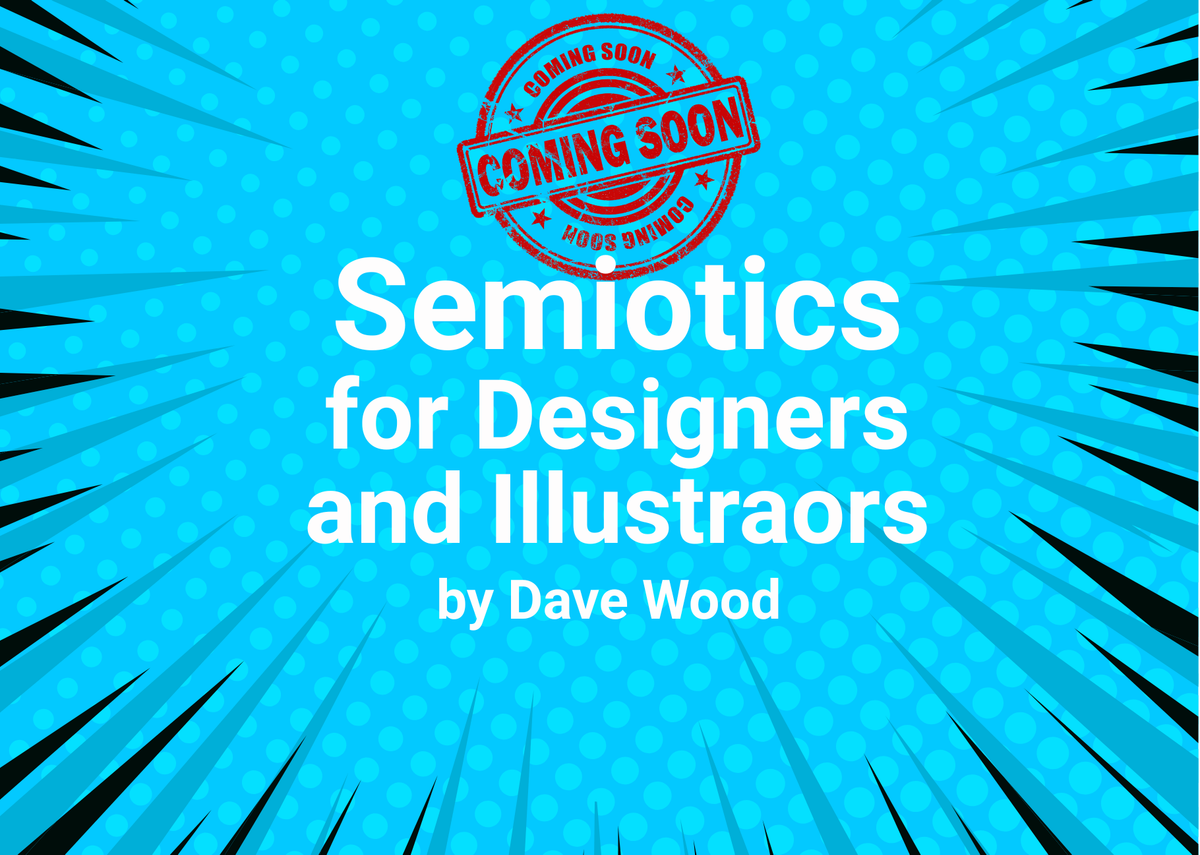004: My writing process… the first full draft
First raw and chaotic draft


Semiotics for Designers and Illustrators (2026)
In my previous newsletter on writing my Semiotics for Designers and Illustrators book I discussed my raw initial draft comprising of 40 Semiosis 101 video scripts and subtitling. When I began writing the book in July 2024, after signing the contract with Bloomsbury Visual Arts, I also had around 17 internationally published academic papers and semiotic workshops run at design conferences. This content from my Semiotic Rosetta Stone research also came to bear on my first draft.
To get my book proposal accepted by Bloomsbury I had to supply a chapter plan and synopsis plus a sample chapter. To help me to quickly find the correct voice and flow for the book I decided to supply a sample chapter 4. This sample would help me to leap frog the establishing of Charles Sanders Peirce’s semiotics theory and straight into a discussion on how Semiosis can be applied into designer’s and illustrator’s existing ideation phases.
While this sample chapter 4 was very helpful to me I did have to initially spend a lot more time during the book proposal’s peer review stage assuring the reviewers that the first three chapters would introduce Peirce’s theory. The proposal’s chapter plan meant that I already had considered the flow of the book from theory to practice, cycling between these two worlds throughout the book to build my thesis. This planned narrative flow would grow illustrators’ and designers’ confidence in understanding Peirce’s theory to apply it in their ideation phases in authentic ways.
My writing app of choice is Scrivener. So I set up a new Scrivener project for my 75,000 word manuscript. As I have already stated in other posts, my book has nine chapters and each of those chapters ends with a case study. Each chapter and case study is written in plain language. Through the Semiosis 101 videos and my Semiotic Rosetta Stone research I have developed a creative-centric ‘meta-language’ in order to contextualise Peirce’s obtuse terminology into creative practice. This meant that the academic explanations of Peirce were contained in 27 box outs that sit alongside each chapter’s main text.
As I already had 9 chapters planned and a method to keep the main text’s flow creative-centred, I could work out my optimum word count, from chapter length down to each paragraph. I calculated that each chapter could get its thesis across in 5000 words. I could then assign 2000 words to each case study. This meant that (at least in planning) each chapter would be 7000 words and the main body of the book would be 63,000 words. The remaining word count would then mostly be assigned to the academic theory box outs, the front and end matter, captions and bibliography.
Each chapter was written in 5 sections: a 1000 word opener and a 1000 word summary, and three segments of 1000 words each to advance the chapter’s thesis. I then structured each of these 1000 word sections into ten ‘paragraphs’ of 100 words each. These ‘paragraphs’ were the structured using A.I.D.A. to open up with an attention grabbing first sentence, followed by ensuring I kept the reader’s interest.
My main writing tip to ensure the clarity and impact of communicating (while ensuring I stay concise) is to use the A.I.D.A. principle: Attention, Interest, Desire, Action. I could then, using A.I.D.A., could build on my thematic point to increase the reader’s desire to keep reading. A.I.D.A. ensured that each 100 word ‘paragraph’ ended on an action point. This would then form a bridge to the next ‘paragraph.’
In being this technical I could write as much as I could at any sitting, and then be able to pick up the writing again where I left off. I have used A.I.D.A. as a scalable technique in my academic writing and my Semiosis 101 scriptwriting. It also meant I could map my raw existing content across the entire book to integrate it into my book’s flow. In this way I wrote the book’s first draft (in between running a graphic design degree at DJCAD) [1] from July 2024 to January 2025. That was 63,000 words over 7 months.
1 Duncan of Jordanstone College of Art and Design (DJCAD), University of Dundee, Scotland.
If you want to be amongst the first to read my book in 2026 I will be posting some exclusive Bloomsbury discount codes in this newsletter nearer publication date.



